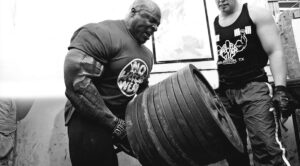Nowadays, most people tend not to consider their back very much until the day it lets them down and they’re forced to spend hours lying in agony on a wooden floor. Even regular gym-goers will generally focus on more glamorous muscles and spurn the opportunity to address the stress and strain a deskbound lifestyle can place on your back. The problem? Your shoulders internally rotate, and this results in tight pecs and a stiff neck.
This often leads to a weakness in the lower back – at best-causing pain and discomfort, at worst risking serious injury – and the problem is only aggravated if you add further stress on the chest and shoulders with endless pressing exercises.
The solution is obvious: Place greater emphasis on your back training. Step forward, the bent-over row.
Your back muscles are the primary beneficiaries of the bent-over row, and as they increase in strength your posture will also improve so you don’t slump as much. Directly stimulating your lats, traps, rhomboids and rotator cuffs works wonders for your body. A stronger back with better posture – what’s not to like?
If you’re a bench press obsessive, you should also find that adding this to your weights session helps balance out your upper body muscles – the bench press focusing on pecs and shoulders in contrast to the back-building row.
The bent-over row is an imperfect exercise. Sure, it helps build upper-body strength. But the position—bent over at the hips, rowing dumbbells or a barbell—is easy to botch. Round the spine or drop the chest, and the lower back can take on a lot of pressure. If the weight is heavy, the torso might bounce, creating momentum and stealing some muscle-building potential. This hybrid move fixes these—and then some.
The Best Full-Body Barbell Workout You’re Not Doing
It starts with a bird-dog—a classic for glute activation and trunk control. From hands and knees, reach one arm forward and the opposite leg back behind you. For the bird-dog heavy row, do the same thing but this time on a flat bench, holding a hefty dumbbell in the elevated hand. “By adding the row, you get a huge anti-rotational component. It forces engagement in the trunk muscles and glutes to secure stability,” says trainer Vernon Griffith, owner of Virginia High Performance in Virginia Beach.
Pick a weight that’s 70 to 80 percent of your typical dumbbell row. Get in bird-dog position, the weight resting on the bench below the chest. Tuck chin, keep back flat, engage the core, squeeze glutes, then slowly draw elbow up along rib cage. Aim for three or four sets of six to eight reps per set. Do all reps on one side, then switch sides.

For more news and updates, follow IFBNewsfeed.Org on Facebook, Twitter, and Instagram.






